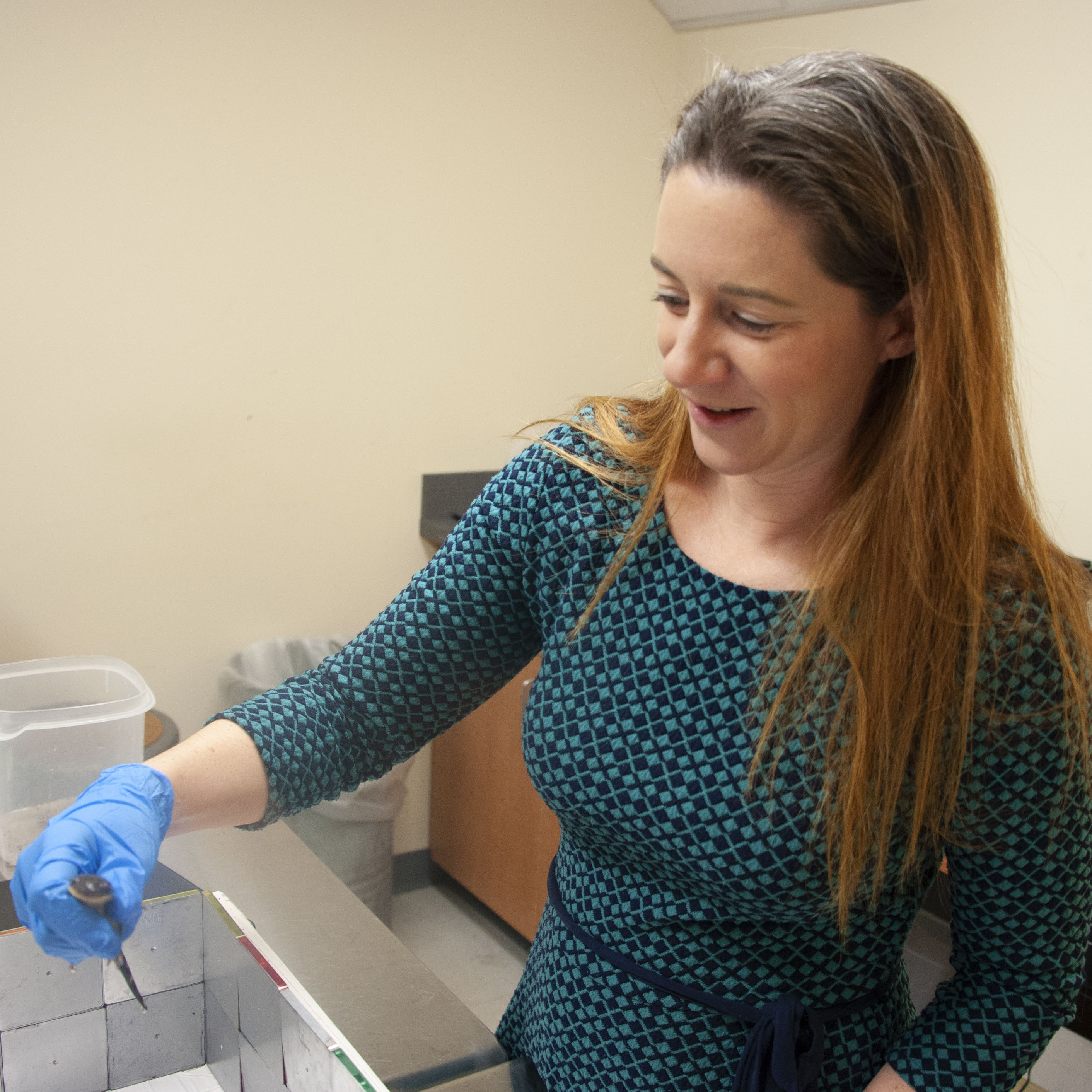Professor Shannon Kundey’s Lab Studies Salamander Cognition

Professor Kundey studies salamander cognition to fill a research void in the field.
Shannon Kundey studies tiger salamander cognition.
Program
- Psychology (B.A.)
Department
- Psychology & Counseling
Degree
Ph.D.
Title
Associate Professor of Psychology
Shannon Kundey, Ph.D., associate professor of psychology, studied the behavior of dogs and how dogs learn for six years at Hood. Four years ago, she switched to studying salamanders to fill a research void in the field.
“There is plenty of research about cognitive abilities in mammals and birds, but there is a gaping hole in the literature for amphibians and reptiles,” said Kundey.
Kundey has published her and her students’ studies in two peer-review scientific journals—Animal Cognition (2016) and Behavioural Processes (2018). Animal Cognition covers animal behavior and how and what animals think. Behavioural Processes publishes original research on animal behavior from any perspective, including under certain environmental conditions and behavior changes over time through evolution.
The Animal Cognition paper, “Tiger salamanders’ (Ambystoma tigrinum) response learning and usage of visual cues,” was completed by Kundey and students Chadbourne Allen ’17, Aleyna Fitz ’17, Maya Gonzalez ’16, Justin McPherson ’15 and Roberto Millar ’16. They explored tiger salamanders’ navigation of a maze based on reinforcement and varying visual cues. They learned that salamanders prefer to learn responses (for example, turn right) rather than use visual cues (for example, turn toward the circle on the wall). However, they can use visual cues if required.
The Behavioural Processes paper, “Tiger salamanders’ (Ambystoma tigrinum) response retention and usage of visual cues following brumation,” was completed by Kundey, Fitz, Anne Lessard ’17 and Manika Panwar ’18. Brumation is a hibernation-like state that cold-blooded animals use to survive extremely cold weather. This paper explored whether tiger salamanders can retain information through brumation. They were reinforced to respond to certain visual cues. Some underwent brumation immediately, others underwent brumation after 24 hours and others did not undergo brumation at all. Then, all were tested to determine if they responded the same way to the visual cues as they had before. The tests found that the timing between recalling information and brumation is important to memory retention through this state, with animals undergoing brumation immediately showing poorer retention of information.
Current studies in Kundey’s lab explore a variety of topics, such as how salamanders use geometry and features in their environment as well as whether they recognize novelty in their environment. These studies will help to illuminate how salamanders think differently from and similarly to other creatures, including humans.
Are you ready to say Hello?
Choose a Pathway
Information will vary based on program level. Select a path to find the information you're looking for!
